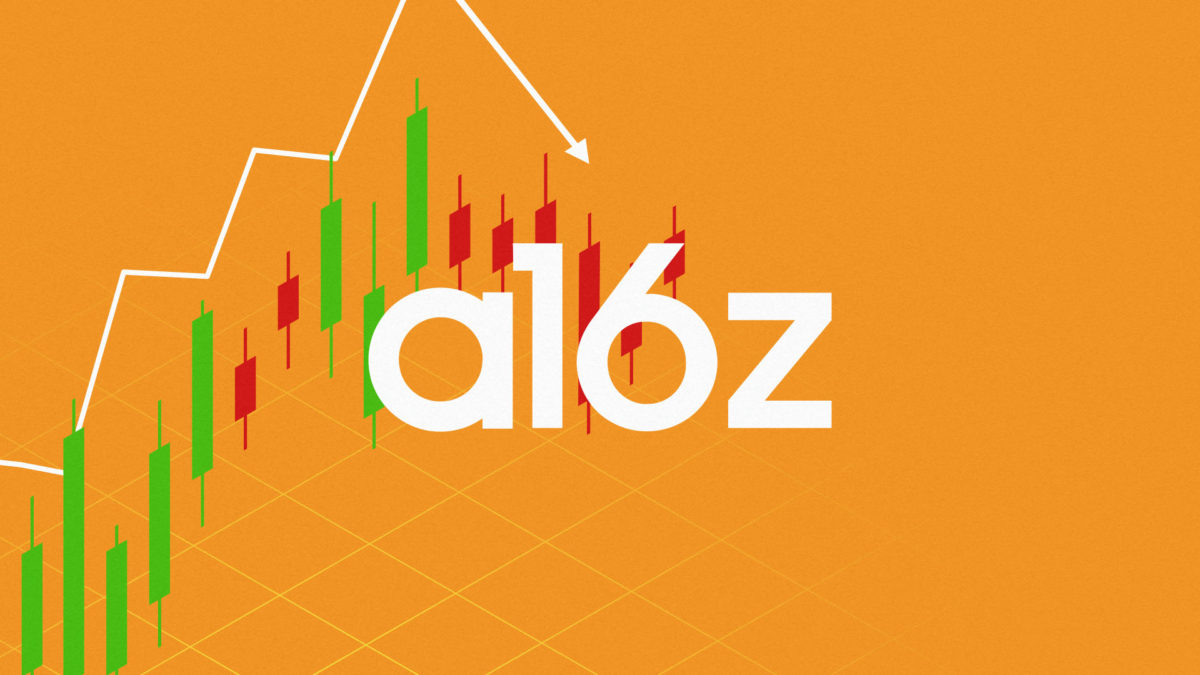The crypto bets of a16z crumble, early investors still profit

By Q1 this year, venture capital firm Andreessen Horowitz’s (a16z) flagship crypto fund had returned almost five times for early backers, according to documents reviewed by Semafor. The firm sold a portion of its tokens right before crypto’s bear market began in May, meaning that early investors are guaranteed a successful return.
The fund was launched in 2018 with $300 million raised. As of Q1 this year, it was worth $356 million.
A16z’s investment style differs from the traditional, Semafor reports. It receives a mixture of shares and ‘token rights’ from its hand-picked crypto companies, which means it can buy various crypto assets from these firms.
This allows a16z to sell tokens at scheduled intervals, helping the VC firm return funds to limited partners, insiders told the outlet.
Still, a16z crypto funds aren’t having a great year
A16z first bet on crypto back in 2013, investing $20 million into crypto exchange Coinbase. When it went public in April of last year, the venture firm sold over half its stake, worth over $5 billion.
As of May 2022, a16z held a remaining 14 million shares, worth $953 million then — but only worth $650 million at press time. In that time period, the crypto market’s total value has plummeted by over 70%. And so far this year, Coinbase stock’s drop has resulted in a loss of 80% for a16z.
Its flagship fund reported a 40% drop by the end of Q2. Indeed, all four of a16z’s crypto funds have no doubt taken losses this year.
A16z has long been on a crypto spending spree. In May, it launched its fourth crypto fund, it’s largest so far, with a casual $4.5 billion. Between July 2021 and June 2022, it invested in 56 crypto companies, including:
- NFT marketplace OpenSea.
- Bored Ape Yacht Club creator Yuga Labs.
- Game developer Sky Mavis, known for creating Axie Infinity.

Read more: Crypto gaming’s shrinking market cap hasn’t scared off investors
These backings paid off when the market was up, yet has since resulted in losses. OpenSea experienced a 99% drop in trading volume since its peak in May. Two months ago, BAYC sold just 16 NFTs in a week.
Sky Mavis was hacked in June and reported $600 million worth of its native AXS token had been taken. It remains among the largest of an unprecedented wave of DeFi hacks this year.
Just last month, formerly renowned internet-of-things firm Helium, another a16z backing, was found to have given a majority of its native HNT tokens to just a handful of insiders, among various other wrongdoings. Some companies a16z recently invested in have collapsed entirely in the bear market.
Read more: a16z dials back crypto investing as flagship fund gets rekt
Cory Klippsten, CEO at Swan Bitcoin, has been vocal about his concerns in the crypto industry, particularly when it comes to Ponzi schemes and altcoins. In an interview with Protos, he described how a16z’s aggressive marketing strategies differ from Bitcoin:
“Most Bitcoiners that promote Bitcoin are just buying and holding as much as possible — and people who love it the most are the people who never sell.
“It’s kind of the exact opposite of what you see with the likes of a16z: full frontal assault, marketing through all their channels, executing massive pumps after they bought a bunch of cheap Solana from the centralized team that controls it in the spring of 2021.
“They ⏤ and all their VC friends ⏤ were selling the top in late 2021, while claiming to the world that they were HODLing.”
Manifesting success with optimism
For this article, Protos asked Klippsten about a16z’s surprising returns to investors amid a crushing bear market.
“The returns don’t matter. They were generated via illegal and immoral activity. As people wake up to the truth about a16z crypto, [limited partners] are going to be embarrassed to be associated with them, and their [assets under management] will dry up.”
However, a16z says it remains steadfast in its longterm goals. Its crypto chief Chris Dixon is optimistic despite the flagship fund’s 40% drop in the first half of the year.
“We have a very long-term horizon,” Dixon said in an interview with Wall Street Journal. “What I look at is not prices. I look at the entrepreneur and developer activity,” Dixon said. “That’s the core metric.”
For more informed news, follow us on Twitter and Google News or listen to our investigative podcast Innovated: Blockchain City.
